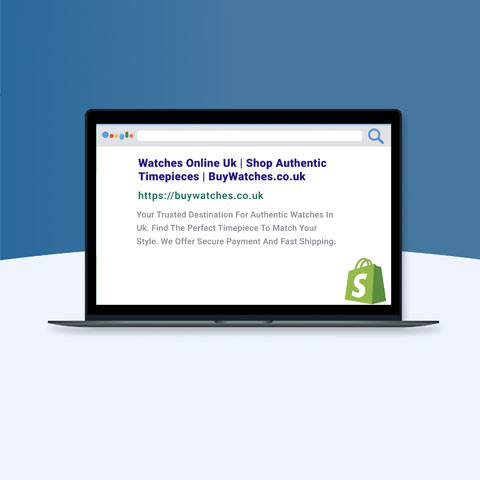5 Things You Should Know About Apple Pay

Apple Pay launched in the UK to a few teething problems, but it is here to stay. The contactless payment service now works in thousands of outlets, including the likes of Tesco, Boots and McDonald’s and is supported by many major banks, including American Express and Nationwide. But what do you need to know about the tech giant's new payment service?
Apple Pay launched in the UK on July 14th to a few teething problems - attempts to use the service in stores caused confusion with customers and employees alike. In fact, it seemed many workers were unaware it was launching on the day or even what Apple Pay was. Despite this, of course Apple Pay is here to stay. The contactless payment service works in thousands of outlets including the likes of Tesco, Boots and McDonald’s and is supported by many major banks including American Express, Nationwide, NatWest, Royal Bank of Scotland and Santander, with Lloyds, Barclays and HSBC coming soon. So what do you need to know?
1. How does it work?
If you have an Apple device, you’re probably familiar with Apple’s Passbook app. Until recently, it was mainly used for aggregating coupons, loyalty cards, cinema tickets and the like, but Passbook is now also the central hub for Apple Pay. If users have the latest generation Apple devices, Passbook will now hold credit card details (as long as your card provider has come to an agreement with Apple). Currently, the banks you can use with Apple Pay are American Express, MBNA, Nationwide, NatWest, Royal Bank of Scotland, Santander and Ulster Bank, with heavyweights such as Lloyds, Barclays & HSBC coming soon.
After this, when an Apple Pay user touches their device to a contactless terminal, the devices communicate using near-field communication (NFC). The user then has the choice of authorising the payment with a passcode, which can be four digits or more, or scanning the device while pressing the Touch ID fingerprint reader.
It is important to note that Apple Pay does not collect any transaction information that can be tied back to users, so it is not particularly useful for marketers trying to gather data.
2. Where is it accepted?
In the UK, an early success for Apple Pay has been London’s public transport, which has NFC readers at all entry points. Although there has been some confusion as to who accepts Apple Pay and where it can be used, the answer is simple - the service can be used wherever contactless payments are available. Just swipe your device on a contactless terminal and you’re good to go.

In addition to this, the service can be used as a payment option in apps on Apple devices. However, unlike other digital wallets such as Paypal, Apple Pay cannot currently be used to pay for goods in browsers.
3. Who are their competitors?
Considering the amount of media attention Apple Pay has received, some may be surprised that there are several digital wallet options that have been around for a while. One example of this is Google Wallet, which was released in the US in May 2011, however Google have done less work with major banks and have focussed on other products, possibly at the expense of Google Wallet thus far.
There are several apps that provide a similar online services to Apple Pay, such as Android Pay and PayPal’s app. One notable competitor could be Facebook’s Messenger service, which recently added financial capabilities. Additionally, Samsung’s service - also called Pay - is on the way.
Apple also has to compete with offerings from mobile networks such as EE’s Cash on Tap and Vodafone’s Smartpass, as well as those from banks or credit card service providers, including Visa’s V.Me and Barclaycard’s bPay. Barclaycard also provides competition in the form of Paytags, which are stickers that are placed on the back of your phone that allow you to make contactless payments in a similar manner to Apple Pay.
Want more like this?
Want more like this?
Insight delivered to your inbox
Keep up to date with our free email. Hand picked whitepapers and posts from our blog, as well as exclusive videos and webinar invitations keep our Users one step ahead.
By clicking 'SIGN UP', you agree to our Terms of Use and Privacy Policy


By clicking 'SIGN UP', you agree to our Terms of Use and Privacy Policy
4. What are the benefits?
In addition to contactless payments, Apple Pay features a payment option at check-out in apps. By allowing their app to support digital wallets such as Apple Pay, customer experience will be quick and painless, presumably leading to higher conversion rates. Adobe conducted a study which showed that smartphone shoppers are 10% more likely to purchase the items in their shopping cart when presented with a digital wallet option.
One of the main selling points that Apple are focussing on with Pay is security. The Apple Pay security and privacy overview lists the numerous security measures in explicit detail. Some of these include complex passcodes or Touch ID on the device itself, the multiple encryptions the data goes through and the ability to remove or suspend credit or debit cards remotely.
Other advantages of contactless payments include reduced in-store queue times and the elimination of cash and currency costs.
5. What are the problems facing it?
Apple Pay users are still getting used to the service. Transport for London in the UK has already warned passengers not to let devices run out of battery or face being charged twice.
Currently, transaction values are limited to £20 in the UK, which will rise to £30 in September, so its use is not unlimited. Over in the US, the only limits on transactions are those put in place by retailers themselves, so the limit in the UK could be lifted soon.
One final obstacle that Apple must overcome is gaining the trust of its customers. Despite the extensive security that the service boasts, consumers remain nervous of new technology.
Final thoughts
To date, digital wallet offerings have not set the world alight, but if anyone can do it, it’s Apple. According to IDC, Apple takes a whopping 92% of profits in the smartphone industry, so introducing a new and easy to use service featured on compatible device by default is certainly going to encourage consumers to experiment with this new method of payment.
Theres still a way to go however, so perhaps the five things you really need to know are:
-
Does Apple take some transaction fees?
Yes and it’s likely to see this as a good source of future revenues. Apple has confirmed that it will “not charge users, merchants or developers to use Apple Pay for payments,” instead generating transaction fees from banks, however it is unclear exactly how much. Ultimately these costs will get passed to consumers in one way or another.
- Will it grow?
Yes, particularly with the growth of wearables
- Will it eventually support online payments?
Undoubtedly.
- Will this start an “integrated payments war”?
Probably.
- Do I need to do anything now?
Make sure you stay up-to-date with news regarding Apple Pay and other digital wallets, and be ready to consider adding functionality to your website to make it compatible. Ultimately making it easy for customers to part with their hard earned cash tends to pay dividends.
Want more like this?
Want more like this?
Insight delivered to your inbox
Keep up to date with our free email. Hand picked whitepapers and posts from our blog, as well as exclusive videos and webinar invitations keep our Users one step ahead.
By clicking 'SIGN UP', you agree to our Terms of Use and Privacy Policy


By clicking 'SIGN UP', you agree to our Terms of Use and Privacy Policy







![[Research] Apps: The Secret Engine of Ecommerce Growth [Research] Apps: The Secret Engine of Ecommerce Growth](https://images.bizibl.com/sites/default/files/apps-and-web-similarweb-480.jpg)

